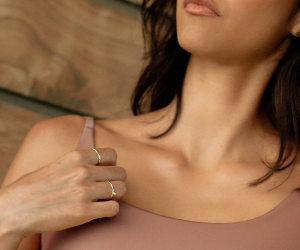The first thing that might go through your mind after getting implants is probably renewing your entire wardrobe and lingerie, which is absolutely well-deserved, but there are also some really important medical and health-related changes many women have questions about to help keep their amazing surgery results and over-all health, so we’ve gathered a few for you here:
1. How do mammograms work now that I have breast implants?
Now that you have breast implants, you can still get regular screening mammograms as recommended by your doctor. It’s really important to mention this right when you make your appointment, this way you can find out if the facility has experience doing mammograms for women with breast implants. To help the doctor see as much breast tissue as possible, women with implants often have 4 extra pictures done (2 on each breast), as well as the 4 standard pictures taken during a screening mammogram. In these extra pictures, called implant displacement (ID) views, the implant is pushed back against the chest wall and the breast is pulled forward over it and then compressed. This allows better imaging of the front part of each breast.
Breast self-examination also works a little different after breast implants. To learn how to perform it step by step, make sure you check out our tutorial here:
2. Follow-up care: How often will I have to visit my surgeon a year after?
For most young women, the breast augmentation recovery process takes only a couple of weeks or months. Many patients get back to their lives and don’t feel the need to take time out of their busy schedules to make any further appointments because they don’t have any “issues”, but it’s actually really important to schedule an annual follow-up visit with your surgeon. Just as our bodies change each year, breast implants can change as well, therefore it’s important to check them once a year.
3. How long will my implants last?
It’s possible you will feel that your breast augmentation has improved your appearance, self-esteem and/or self-image and are now set for life, but it’s important for you to know that implants may need replacement down the line. Part of monitoring your breast health and the status of your implants through follow-ups scheduled by your surgeon’s recommendation from time to time will help determine if and when it’s time for a revision surgery. For some, replacement implants may be needed at a 10-year mark, but this is a decision that will be made by you and your plastic surgeon when the time comes. For now, you can keep enjoying your results and focus on loving and taking care of your body as a whole.
4. Can I breastfeed after a breast augmentation?
The majority of women with breast implants are able to breastfeed, though there are a few exceptions. Actually whether you’re able to breastfeed or not usually depends on the original state of your breasts before surgery and possibly the type of incision you and your surgeon prefer. Breast implants may affect the amount of breast milk you’re able to produce, but in some cases, milk supply isn’t affected at all.
5. Can breastfeeding or pregnancy affect the appearance of my breast implants?
It’s common during pregnancy and after breastfeeding for women’s breasts to change in shape and size, and although breastfeeding shouldn’t affect your implants directly, the size and shape of your breasts overall may be different than they here right before your recovery.
6. What can I do if stretch marks have appeared after my procedure?
Did you know stretch marks are predominantly hereditary? They are completely normal and can depend on a number of factors. After a BA the most important factor to determine the patient’s predisposition toward developing stretch marks is the size of the implant used in the procedure (a larger implant causes greater skin stretching) and the techniques used during the augmentation procedure itself. By placing an implant under your skin, it has to naturally stretch to cover the implant which can sometimes cause patients to gain stretch marks. Luckily, there are over-the-counter creams that you can use to help keep your skin moisturized and reduce their appearance, applying it directly to your breasts both before and after your surgery. Remember, it sometimes takes a while for your body to heal and regenerate itself so try to be patient and remember that you’re beautiful just the way you are.
How can I take care of my breast skin after surgery?
You might be used to wearing sunscreen on your face everyday but after surgery it is really important to apply specially to your breasts. This will help reduce the risk of premature wrinkling and sun damage. If you don’t usually use sunscreen, buy sunscreen that has an SPF of at least 30 and apply it daily before you leave the house, even on cloudy days. The better you take care of the skin on your chest and breasts, the more rejuvenated your skin will stay for years to come.
Other things many women do is moisturize their girls every single day (rubbing moisturizer on your breast skin daily can contribute to maintain a perkier and younger appearance in the long term) and masking (yeah, just like the masks you put on your face but for your boobies). It might seem a little crazy to do, but according to dermatologists, incorporating your breasts into your beauty skin care routine isn’t as extra as it seems. In most cases, the skin on our chest experiences lots of sun damage and since there are a lot of sebaceous glands in our breast area, they are prone to acne and breakouts so masks can contribute to keep them young and pimple free. If your skin is sensitive, ask a professional if this is a good option for you.

